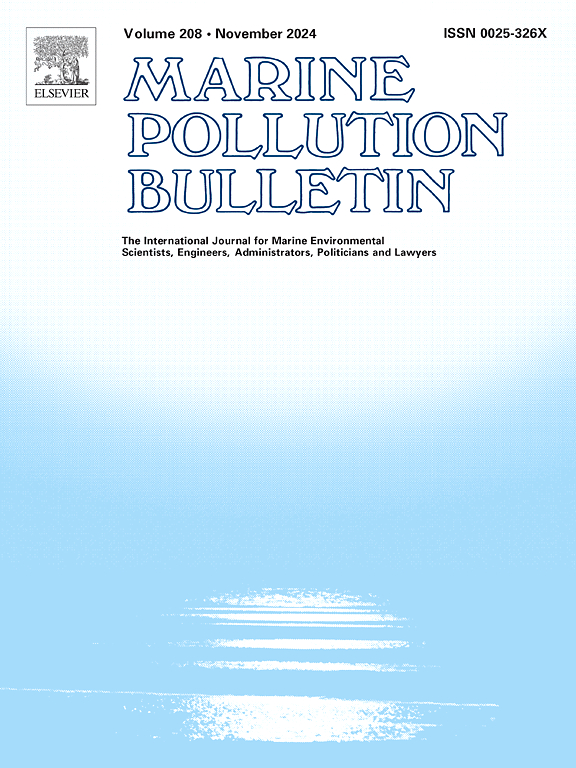Biodegradable twine for trawl fishing: Seawater ageing and net modelling
IF 5.3
3区 环境科学与生态学
Q1 ENVIRONMENTAL SCIENCES
引用次数: 0
Abstract
Fishing gears are designed to catch marine species, but when lost at sea, they can continue to trap and kill aquatic life, a phenomenon known as ghost fishing. This study evaluated the use of a biodegradable twine made from poly(butylene succinate)/poly(butylene adipate terephthalate) (PBS/PBAT) in trawl fishing. The assessment included mechanical testing, trawl modelling, and seawater ageing simulations to explore potential loss scenarios. Mechanical tests indicated that the PBS/PBAT braid was about half as strong as high-density polyethylene (HDPE) but was suitable for braiding and netting. After 3 years in seawater, PBS/PBAT monofilaments showed biotic degradation, with strength losses of 20 % at 15 °C and 80 % at 25 °C. This suggests that gear made from this polymer would degrade faster than conventional gear if lost. Trawl modelling further demonstrated that trawl performance was only slightly affected by material change and ageing, highlighting the potential for reducing ghost fishing with less persistent twine.
用于拖网捕鱼的生物降解麻绳:海水老化和渔网建模。
渔具是用来捕捉海洋物种的,但当它们在海上丢失时,它们会继续诱捕并杀死水生生物,这种现象被称为幽灵捕鱼。本研究评估了由聚(丁二酸丁二酯)/聚(己二酸丁二酯)(PBS/PBAT)制成的可生物降解线在拖网捕鱼中的应用。评估包括机械测试、拖网建模和海水老化模拟,以探索潜在的损失情况。力学试验表明,PBS/PBAT编织强度约为高密度聚乙烯(HDPE)的一半,但适合编织和编织。在海水中浸泡3年后,PBS/PBAT单丝出现生物降解,在15°C时强度损失20%,在25°C时强度损失80%。这表明,由这种聚合物制成的齿轮如果丢失,会比传统齿轮降解得更快。拖网模型进一步表明,拖网性能只受到材料变化和老化的轻微影响,强调了使用较短的持久绳减少幽灵捕鱼的潜力。
本文章由计算机程序翻译,如有差异,请以英文原文为准。
求助全文
约1分钟内获得全文
求助全文
来源期刊

Marine pollution bulletin
环境科学-海洋与淡水生物学
CiteScore
10.20
自引率
15.50%
发文量
1077
审稿时长
68 days
期刊介绍:
Marine Pollution Bulletin is concerned with the rational use of maritime and marine resources in estuaries, the seas and oceans, as well as with documenting marine pollution and introducing new forms of measurement and analysis. A wide range of topics are discussed as news, comment, reviews and research reports, not only on effluent disposal and pollution control, but also on the management, economic aspects and protection of the marine environment in general.
 求助内容:
求助内容: 应助结果提醒方式:
应助结果提醒方式:


